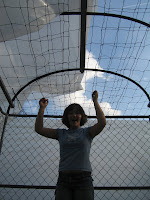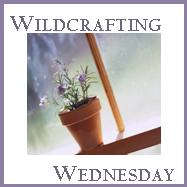Alternative medicine is a fascinating field of study that includes many ancient practices from cultures all over the globe. Practices that have stood the test of time and are still being used today in many countries. Folks still draw from the ancient works of Hippocrates, Galen, Dioscorides and Avicenna to learn about herbal remedies. The Bible talks of herbs and plants used for healing as well as proper diets for good health. Every culture, through written or oral traditions, have used healing plants for their medicinal properties to create or restore wellness. Pliny, Nicolas Culpepper, John Gerard and many others spanning history from the beginning leave behind herbal knowledge that is valued today.
Most herbal books found in the States focus on one particular cultural tradition or another. Rich European traditions for herbal remedies, which were influenced by a combination of Arabic, Celtic, Greek and Roman cultures, are the basis for Western Medicine. However, Eastern medicine offers it's own set of practices that prove to be quite valuable such as Traditional Chinese Medicine (TCM) and healing wisdom from India called Ayurveda. While some of these traditions are coupled with many rituals and various religions, it is feasible to examine them from a neutral standpoint, gleaning the valuable medical properties and uses of herbs as well as diet and movement to learn a comprehensive overview of alternate practices.
Important to all is to be "in touch" with your body so you can understand what it's telling you and being responsible for our own health. When you're thirsty, you drink; when you're hungry, you eat; because our bodies were designed to stay healthy and will try to show us what they need to do that through various means, we need to learn to interpret these symptoms. These signs can lead us toward an alteration in our diet, supplements or other natural and alternative means that can begin the healing process or indicate that we need to seek out medical diagnosis or advice before proceeding.
Determining the diagnosis based on symptomology or more advanced means is the first step. Seek out the guidance of an experienced herbalist or health care practitioner who is willing to cooperate with you in selecting a treatment plan. Looking at the body as a whole instead of merely treating symptoms while ignoring the root cause of the illness is also important.
This is not an invitation to snake oil cures or quackery. Today's herbalist needs to draw from medical and scientific research as well as cultural traditions to gain a respectable reputation in the Western Medical community as viable alternative healers. The public demand for more "natural" cures and the huge increase in health care costs may cause the mainstream health care providers and health insurance policy makers to take another look at herbal remedies that have been scientifically proven and even some that are merely backed by centuries of hard to ignore empirical evidence. This demand is based on the risk involved with many orthodox pharmaceuticals and treatments, environmental concerns and a growing reawakening of the knowledge that prevention and maintaining good health practices are essential.
An ancient Chinese text says, "the good doctor attends to keeping people well, while the inferior only treats those that are sick."
In the first or second century A.D., one of the oldest Chinese herbals, listed 365 healing remedies, most of them plants but some from animal extract or minerals. Dioscorides, a first century A.D. Greek physician, listed 400 plants. In the Chinese Materia Media today, there are 5,800, while India lists 2,500. In the tropical forests of Africa there are over 800 plants gathered regularly for medicinal use. Germany, the first western country with official herbal monographs, list nearly 300 herbs used by the medical profession. Western herbalists find that they can deal with most ailments with a working knowledge of about 150 or so plants.
The key is restoring and maintaining balance...physical, spiritual and emotional...in our bodies so they can heal and live in harmony as they were designed to do. Health is a manifestation of your world, both inside and out. What you eat or drink determines if your body has what it needs to function properly and fuel all systems or if your diet is lacking in nutrients or overloaded with poor choices which can cause deficiencies. It's also important to remember that the largest organ we have is our skin so every element or chemical we come in contact with both intentionally and environmentally, has the potential to be absorbed into our bodies effecting our health. What you put into your mind creates a worldview that influences nearly every choice you make...good or bad. And what you put into your soul creates the kind of person you will become based on spiritual nourishment or lack of it.
I'll be writing more on these topics and others in the days and weeks to come so be sure to check back here for more on Herbal Remedies Past and Present. Become a follower to receive instant notification of new posts.
Join Jenny for lots more letter "I" topics @

 This is the 3rd week of our Herbal Medicine Chest. Check out the other posts in this series by clicking on the Herbal Medicine Chest page tab or the button to the left. Join us every Monday for the next several weeks to explore herbal preparations and put together your own Herbal Medicine Chest.
This is the 3rd week of our Herbal Medicine Chest. Check out the other posts in this series by clicking on the Herbal Medicine Chest page tab or the button to the left. Join us every Monday for the next several weeks to explore herbal preparations and put together your own Herbal Medicine Chest. 










































